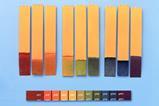Use textbooks effectively in your classroom with these six teacher-tested approaches

Textbooks are an established educational resource – with a bad reputation. I rarely used them in my early years of teaching. The consensus then seemed to be they were only useful for cover lessons or when you were so tired or ill you couldn’t do anything else. I also saw them frequently used as a threat for students: ‘if you don’t behave during the practical then I will get the textbooks out.’
Thankfully textbooks are undergoing a renaissance, with teachers increasingly interested in how they can be used to help students. In a world filled with distractions, a textbook is a point of focus for students, providing clear and accurate support and potentially reducing the cognitive burden.
We are all teachers of literacy
Textbooks’ continuous prose has a greater literacy demand than a slide of bullet points. While some students find this challenging, it also presents an opportunity. Regardless of our subject, we are all teachers of literacy and using textbooks can support our colleagues in the English department with their work in improving students’ reading and writing skills.
Chemistry is a relatively fixed body of knowledge, especially in core topics for the 14–16 age range. It doesn’t actually matter if a textbook is not for your current specification. Atomic structure and bonding hasn’t changed much in the last few years.
Now I’ve (hopefully) persuaded you that textbooks are a valid part of a teacher’s toolkit, let’s consider how to use them to best effect.
1. Supporting independence
At a very basic level, simply giving students a textbook alongside your usual classroom routine can be a good introduction to their positive use. Give students the relevant page numbers (or, even better, encourage use of the index) and when they ask questions during an independent task, direct them to the textbook. You might still need to step in later, of course.
2. Reading together as a class
Guided reading is a common feature in primary schools, but in secondary schools it’s often left to the English department. I like to ask students to read paragraphs aloud. Chemistry textbooks can be challenging, with a high reading age so we must support students with anxieties about reading aloud. Until I know the class really well, I always ask for volunteers. I note lack of volunteering then check later to see if there’s a reason behind it.
3. Building vocabulary
While the students are reading aloud or if you ask them to read independently, get them to note down any words they don’t know. Textbooks have glossaries so they are good for teaching subject-specific vocabulary but, additionally, the greater challenge of the text is a good way of working out what tier 2 words students don’t know. I once had a student ask me what desirable meant in the context of ‘desirable properties of materials’ after reading the textbook.
4. Directed activities related to the text
Lower achievers and students who might have less stamina with reading may need tasks that direct how they use the text. The simplest of these is comprehension-type questions where the answers are easily found in the text or require some interpretation. Such activities are low stakes and are familiar from primary school. They help build confidence and encourage students to read the text carefully rather than skimming.
5. Scaffolded note taking
Avoid just ‘making notes’. The majority of students do not have the skills to make notes without clear and specific instruction. They will simply write the whole thing out with little thought, and while they will feel good for having done something, it doesn’t lead to deep learning.
Challenge higher achievers to improve their study skills for the longer term. Textbooks are excellent resources for training students in the Cornell notes technique. There are varying reports of the technique’s efficacy in terms of achievement, but there is evidence it improves note taking. Many schools are focusing on study skills in their pastoral curriculum and teaching study skills within academic subjects reinforces this work and makes it less abstract.
6. Organising ideas with diagrams
Graphical organisation of ideas can lead to powerful learning. Direct students to a textbook page or section and guide them to organise the information in a diagram. This moves the challenge beyond just reading the text and towards understanding the links between the concepts being described. Having the textbook there as support reduces the cognitive load of the activity. The chemistry is all there on the page and their focus is on organising it.














No comments yet